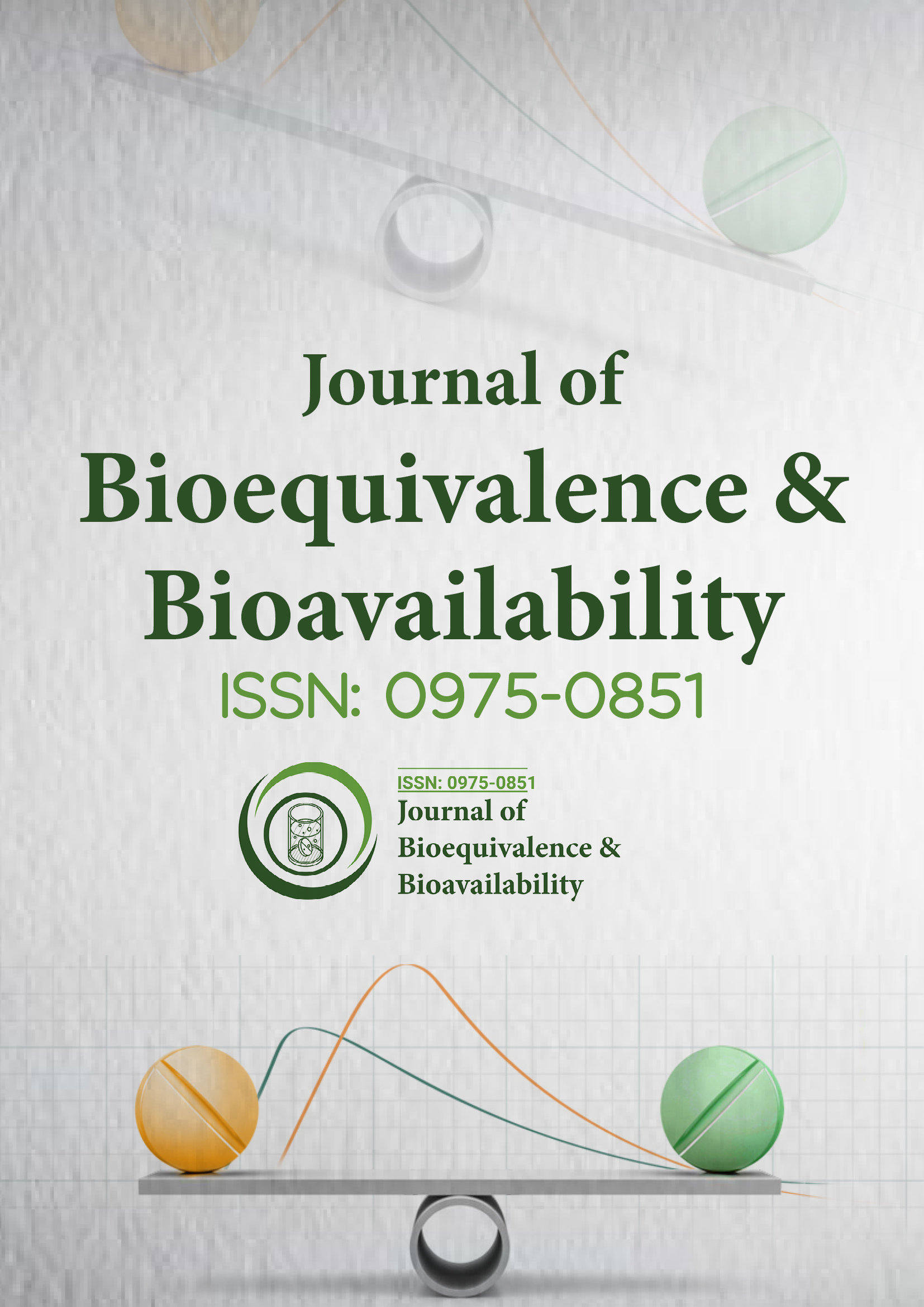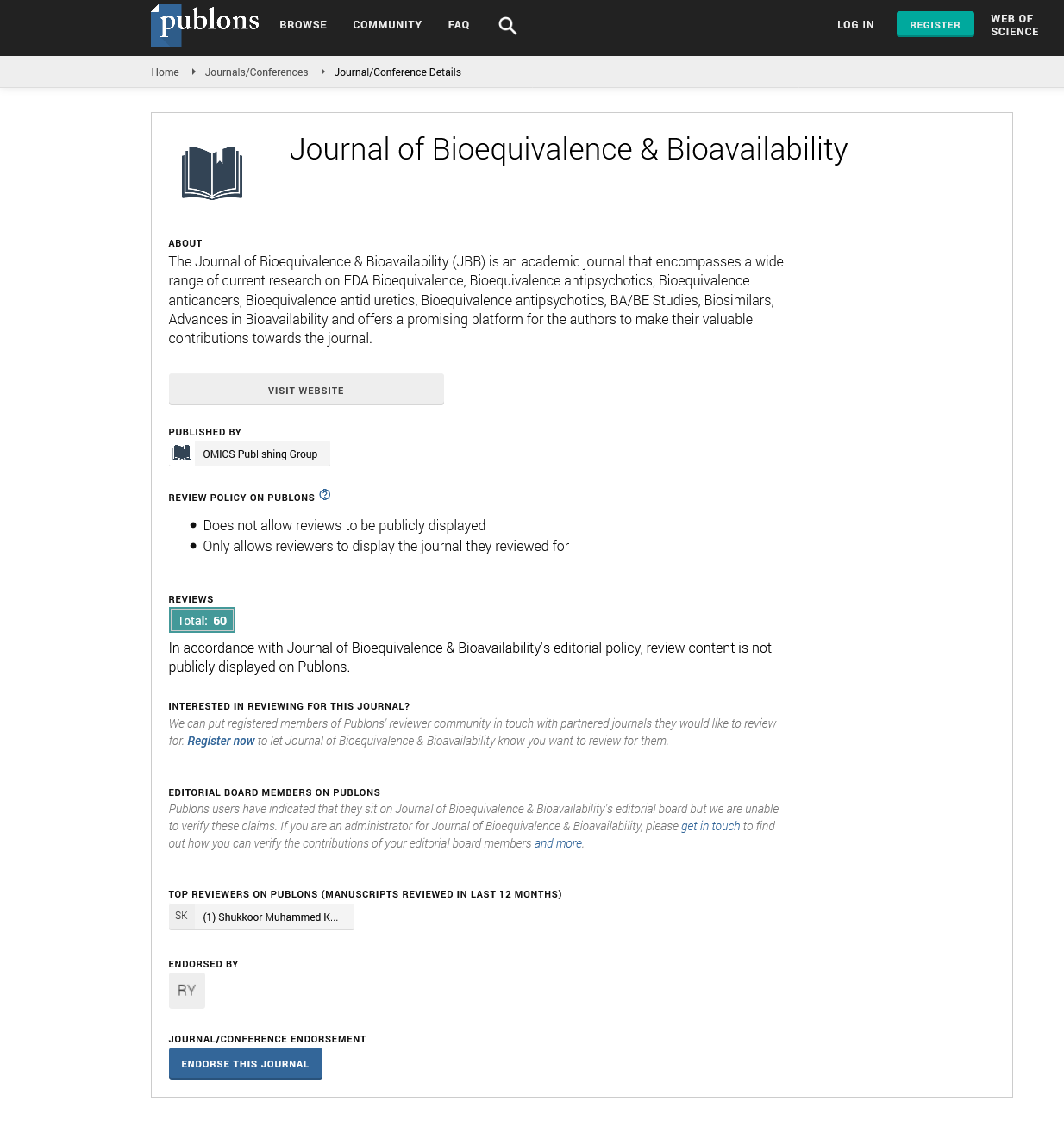Indexed In
- Academic Journals Database
- Open J Gate
- Genamics JournalSeek
- Academic Keys
- JournalTOCs
- China National Knowledge Infrastructure (CNKI)
- CiteFactor
- Scimago
- Ulrich's Periodicals Directory
- Electronic Journals Library
- RefSeek
- Hamdard University
- EBSCO A-Z
- OCLC- WorldCat
- SWB online catalog
- Virtual Library of Biology (vifabio)
- Publons
- MIAR
- University Grants Commission
- Geneva Foundation for Medical Education and Research
- Euro Pub
- Google Scholar
Useful Links
Share This Page
Journal Flyer

Open Access Journals
- Agri and Aquaculture
- Biochemistry
- Bioinformatics & Systems Biology
- Business & Management
- Chemistry
- Clinical Sciences
- Engineering
- Food & Nutrition
- General Science
- Genetics & Molecular Biology
- Immunology & Microbiology
- Medical Sciences
- Neuroscience & Psychology
- Nursing & Health Care
- Pharmaceutical Sciences
Commentary - (2025) Volume 17, Issue 1
The Impact of Genetic Polymorphisms on Plasma Drug Concentration and Generic Drug Bioequivalence
Peitro Danney*Received: 03-Feb-2025, Manuscript No. JBB-24-28943; Editor assigned: 05-Feb-2025, Pre QC No. JBB-24-28943 (PQ); Reviewed: 18-Feb-2025, QC No. JBB-24-28943; Revised: 25-Feb-2025, Manuscript No. JBB-24-28943 (R); Published: 04-Mar-2025, DOI: 10.35248/0975-0851.25.17.620
Description
Bioequivalence, particularly as it pertains to plasma drug concentrations, remains a fundamental pillar in the regulatory evaluation and approval of generic drugs worldwide. The concept hinges on the premise that a generic formulation should deliver the Active Pharmaceutical Ingredient (API) into the systemic circulation at a rate and extent comparable to that of the Reference Listed Drug (RLD), thereby ensuring therapeutic equivalence. The measurement of plasma drug concentration serves as a direct and quantifiable surrogate marker for the drug’s pharmacokinetic profile, enabling regulatory bodies to assess whether a generic can safely and effectively substitute the innovator product. However, beneath the seemingly straightforward criteria of bioequivalence lies a complex landscape of scientific, clinical, and regulatory considerations that continue to fuel debate and research in pharmaceutical sciences.
Moreover, plasma drug concentration bioequivalence studies are typically conducted in healthy volunteers under controlled conditions, often using single-dose, crossover study designs. These controlled environments do not fully replicate the complexities of real-world clinical use, where patients may have comorbidities, concomitant medications, or variable adherence that can influence drug pharmacokinetics and pharmacodynamics. For instance, absorption may be altered by food intake or gastrointestinal conditions, distribution can be affected by changes in plasma protein binding due to disease states, and metabolism may vary due to genetic polymorphisms or liver impairment. Thus, plasma drug concentration bioequivalence, while essential for initial regulatory approval, does not wholly predict clinical interchangeability or therapeutic equivalence in all patient populations.
Internationally, the robustness of bioequivalence assessments varies with regulatory capacity and infrastructure. Agencies such as the FDA, European Medicines Agency (EMA), and Health Canada enforce stringent bioequivalence standards with comprehensive review processes. However, in some low- and middle-income countries, regulatory oversight may be less rigorous due to resource constraints. This can lead to approval of generic products with inadequate bioequivalence evidence or poor manufacturing practices, undermining confidence in generic drugs. The resulting variability in plasma drug concentrations from substandard or counterfeit generics poses risks to patient safety and therapeutic efficacy. Therefore, global harmonization of bioequivalence standards and strengthening of regulatory systems are vital for maintaining generic drug performance and public trust.
Advancements in analytical technologies and modeling tools are transforming the evaluation of plasma drug concentration bioequivalence. High-sensitivity bioanalytical methods allow for precise measurement of drug concentrations even at low plasma levels, enhancing the reliability of pharmacokinetic data. Physiologically Based Pharmacokinetic (PBPK) modeling integrates drug-specific properties with physiological parameters to simulate plasma concentration profiles under various scenarios, including different patient populations, dosing regimens, and disease states. This in silico approach can predict potential bioequivalence failures or highlight formulation issues before clinical studies, streamlining generic drug development. Machine learning algorithms further augment this process by analyzing complex datasets to identify patterns affecting drug absorption and metabolism, potentially improving formulation design and regulatory assessment.
Despite these technological strides, the fundamental challenge remains: plasma drug concentration bioequivalence serves as a surrogate endpoint rather than a direct measure of clinical efficacy or safety. Consequently, healthcare providers and patients sometimes perceive generic substitution with skepticism, especially for critical medications. This perception can be influenced by anecdotal reports of therapeutic failure or adverse reactions following a switch, regardless of bioequivalence data. Addressing these concerns requires transparent communication, patient education, and, where appropriate, therapeutic drug monitoring to ensure optimal outcomes. Continued research is also necessary to refine bioequivalence criteria and incorporate pharmacodynamic endpoints or clinical biomarkers when feasible.
In conclusion, the measurement of plasma drug concentrations remains the gold standard for demonstrating bioequivalence between generic and reference products, providing a quantifiable and reproducible basis for regulatory approval. Yet, the multifaceted nature of drug therapy demands recognition of the limitations inherent in this approach. Addressing challenges related to narrow therapeutic indices, patient variability, formulation differences, and real-world clinical outcomes requires a holistic perspective that integrates pharmacokinetics with pharmacodynamics, therapeutic monitoring, and advanced predictive modeling. As generic drug markets continue to expand globally, ensuring that plasma drug concentration bioequivalence translates into consistent therapeutic performance is paramount for safeguarding public health and maximizing the benefits of generic medicines.
Citation: Danney P (2025). The Impact of Genetic Polymorphisms on Plasma Drug Concentration and Generic Drug Bioequivalence. J Bioequiv Availab. 17:620.
Copyright: © 2025 Danney P. This is an open-access article distributed under the terms of the Creative Commons Attribution License, which permits unrestricted use, distribution, and reproduction in any medium, provided the original author and source are credited.

